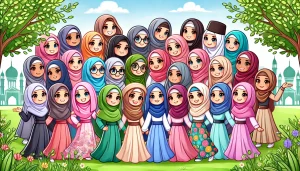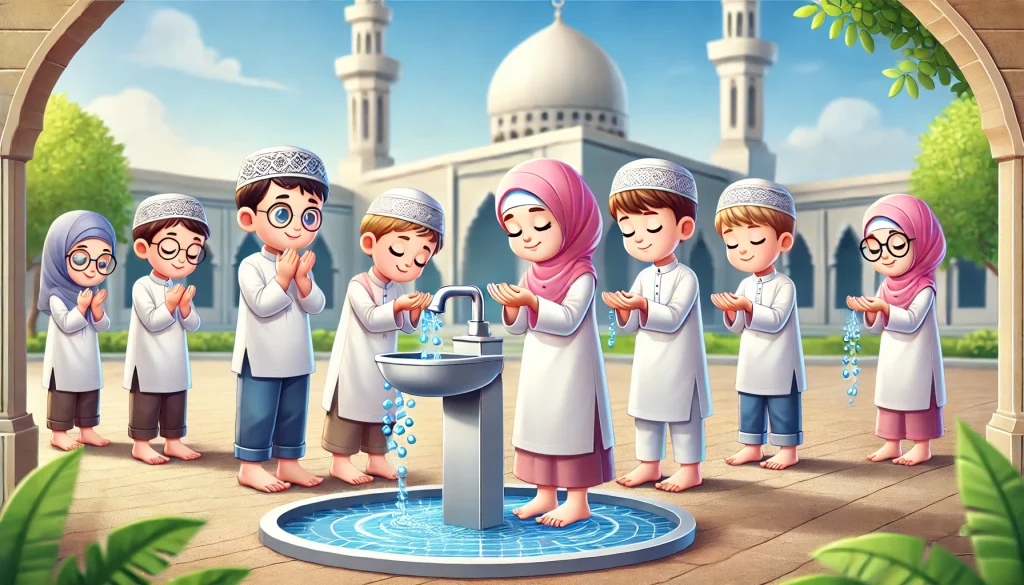Introduction
The hijab is not just a piece of cloth but a symbol of faith, modesty, and identity for many Muslim women around the world. The question of when Muslim girls should begin wearing the hijab often arises, sparking curiosity and sometimes debate among both Muslims and non-Muslims. This article delves into the age at which Muslim girls typically start wearing the hijab, the cultural and religious influences behind this practice, and the varying perspectives within the Muslim community.
Table of Contents
- Understanding the Hijab
- Religious Guidelines
- Cultural Influences
- Parental and Community Roles
- Personal Choice and Modern Perspectives
- Conclusion
Understanding the Hijab
What is the Hijab?
The hijab is a traditional headscarf worn by Muslim women as a sign of modesty and privacy. It is an essential part of Islamic dress code, symbolizing both religious adherence and cultural identity. The term “hijab” can also refer to the broader concept of modest dressing and behavior in Islam.
Significance of the Hijab
In Islam, the hijab is a manifestation of a woman’s faith and her commitment to modesty. It serves as a reminder of her religious beliefs and her role within the Muslim community. The hijab is also a way for Muslim women to express their individuality while adhering to their faith.
Religious Guidelines
Quranic Verses and Hadiths
The guidelines for wearing the hijab are derived from the Quran and the Hadiths (sayings of the Prophet Muhammad). The Quran advises women to dress modestly and cover their adornments, although it does not specify an exact age for starting the hijab.
Age of Puberty
Islamic teachings generally suggest that girls should start wearing the hijab at the age of puberty. This is the age when a girl becomes religiously accountable for her actions, which typically ranges from 9 to 15 years old, depending on individual development.
Cultural Influences
Variations Across the Muslim World
The age at which girls start wearing the hijab can vary significantly across different cultures and communities. In some cultures, girls may begin wearing the hijab at a very young age, even before puberty, as part of their upbringing and religious education. In other cultures, the decision may be postponed until the girl feels ready.
Family Traditions
Family traditions play a crucial role in determining when a girl starts wearing the hijab. Some families may introduce the hijab gradually, allowing their daughters to become comfortable with the practice over time. Others might have a more defined age or milestone when the hijab becomes a part of daily life.
Parental and Community Roles
Parental Influence
Parents are often the primary influence in a girl’s decision to wear the hijab. They provide guidance and support, helping their daughters understand the religious and cultural significance of the hijab. The approach can range from gentle encouragement to more structured expectations.
Community Expectations
The broader community also plays a significant role. In tightly-knit Muslim communities, there may be collective norms and expectations about when girls should start wearing the hijab. Peer influence and community standards can impact a girl’s decision and her comfort level with the practice.
Personal Choice and Modern Perspectives
Balancing Tradition and Individuality
In contemporary society, many Muslim families are striving to balance traditional practices with individual choice. While the religious guideline is clear, there is growing recognition of the importance of personal readiness and willingness. This approach respects the girl’s autonomy and fosters a positive relationship with the practice.
Challenges and Support
Girls may face various challenges when they begin wearing the hijab, including social pressures and misconceptions from peers. Providing a supportive environment, both at home and in the community, is essential for helping them navigate these challenges confidently.
Conclusion
The age at which Muslim girls begin wearing the hijab is influenced by a combination of religious guidelines, cultural practices, family traditions, and personal choice. While puberty marks a significant milestone in Islamic teachings, the decision is ultimately shaped by a supportive and understanding environment. By respecting individual readiness and providing the necessary guidance, families and communities can ensure that the practice of wearing the hijab is a meaningful and positive experience for young Muslim girls.












Right now it seems like WordPress is the peferred blogging platform out there right now.
(from what I’ve read) Is that what you arre using oon your blog? https://Bandur-ART.Blogspot.com/2024/08/the-ultimate-guide-to-no-mans-sky-mods.html
I’m really inspired together with your writing skills and also with the structure on your weblog. Is this a paid subject or did you modify it yourself? Either way keep up the excellent high quality writing, it is uncommon to peer a great weblog like this one nowadays. !